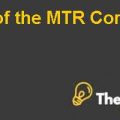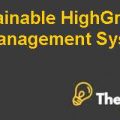The JKJ Pension Fund Case Study Solution
Introduction
ERISA which is the Employee Retirement Income Security Act was enacted in the year 1974 and the guidelines had imposed the fiduciary standards for managing the invested portfolios of the pension funds. This had also encouraged the distribution of the resources across the diversified range of the asset categories. In between all these guidelines, the definition of the prudent man for the investment had stressed that portfolio decisions should be made by the fiduciary of the trusted funds, who should act with care, diligence, prudence and skill just like a man that would act under the prevailing circumstances who is familiar with all such matters that he would use in the conduct of an enterprise.
The aim would be to minimize the risks of the investments through diversification and also to minimize the losses. Pension funds need to increase their real estate holdings at this time because ERISA had a significant impact on the investment strategies that looked for the most optimal combination of the assets because real estate was targeted as a viable investment avenue for the first time. Also, the institutional investors had found real estate to offer more favorable and risk adjusted returns as compared to the other assets in the market, as it provided diversification and hedge against inflation so it was important for pension funds to increase holdings in real estate.
Analysis
The analysis of all the 11 properties and recommendation about which to hold and which to sell is performed below:
Undeveloped Land, Los Angeles, CA
The property with total investment of $ 3600000 comprises of three lots, lot A, lot B and lot C. Lot A is currently leased to adjacent hotel and it generates annual returns of 35,500. The cap rate for this property should be between 7.5% to 9.5% since it is retail and residential type of property. Since, the lease is for 20 years so risk is low and we take a cap rate of 7.5%. Lot B generated $ 24000 per year and its risk is high because of low interim users so we take a cap rate of 9%. Finally, Lot C is rented regularly by the civic organizations and the community groups so the level of risk is low and we take a cap rate of 7.5%. The average cap rate would be 8% with value of $ 743750. The value is low for this property overall but has potential of an increase in value so Sarah should hold.
Wilshire Plaza Garage, Los Angeles, CA
This is a garage with 3500 parking spaces and the cap rate bracket for garages is between 10-12% and as the garage generates revenues currently so risk is moderate and we use an average cap of 11% generate a value of $ 10730000. This property is good as the location of the land is good and beside office buildings and Royale Plaza Hotel. Garage is also manageable and has a good value so Sarah should hold it.
Wilshire Ground Leases, Los Angeles, CA
The rent is fixed at $ 58000. Since, this property falls in the garage type so we take average cap rate of 10% as the risk is low. This is a good property as the land is well diversified into the three sectors. This venture is well diversified and the value is good at $ 2179960 son Sarah should hold it.
Riverbank Center Hotel, Mobile, AL
This property is managed by a reputable nationwide operator and it is close to airport and auditorium complex. Its occupancy is expected to increase to 60% from 53% in 1995. The cap rate for hotels is between 9.5% and 12% so we used an average cap rate of 10.75% on NOI to generate the value of property which is $ 3712102. The future performance is expected to improve therefore; Sarah should hold this property.................
This is just a sample partial work. Please place the order on the website to get your own originally done case solution.










